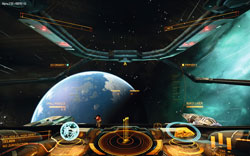Establishing shot: fog, thick. A foghorn cautions from somewhere. The fog recedes and shows open ocean. It lightens a little more, and a steamer ship on the horizon motors towards us. On the bow, we have two men, staring into the fog of oblivion. In the distance, an island with a beacon, and nothing else. There, the keepers will be alone for four weeks until relief.
Director Robert Eggers wastes no time setting the tone for The Lighthouse. No dialogue for almost ten minutes. Wide shots with long durations. The sounds of the whipping winds and the restless ocean.
Shot in stark black and white, this movie looks like an Ingmar Bergman classic or The Cabinet of Dr. Caligari. And it’s just as enchanting as the mermaids in it.
This is Eggers’ second film following the cult success of 2015’s The Witch, a horror piece set in the outskirts of 1630 New England. The Lighthouse, written by Max and Robert Eggers, is similar to The Witch for two reasons.
First, both heavily rely on the jargon of their period to create more realistic dialogue.
The Eggers brothers used Herman Melville’s writings and diaries of sailors to craft their masterful dialogue. Secondly, its setting is specific and acts as a character.
Ephraim Winslow, played by Robert Pattinson, is a foreman, and Thomas Wake, played by Willem Dafoe, is his captain. Winslow is tasked with all of the hard labor; shoveling coal, painting the tower, hauling barrels of oil to the top of the tower.
Wake’s duty is to man the light and cook.
The two men tensely chat about superstition, lighthouse business, and not much else. These characters are suspicious of each other, and we know less than they do.
We see them dance, sing shanties, box, and descend into darkness together.
Pattinson and Dafoe are electric together and both should be nominated for Oscars.
At times, Pattinson’s acting is so intense, the veins in his head make it look like he’s going to burst. He resembles Daniel Day Lewis, and gives a DDL-level performance. Dafoe mirrors Gregory Peck’s ferocious Ahab in 1956’s Moby Dick.
Although the dialogue is amazing, it does take an adjustment period to adapt to Wake and Winslow’s jargon.
There are a few scenes where the dialogue is too much and detracts from the story in crucial moments.
Also, one of Wake’s monologues is so riddled with sailorspeak, he might as well have said nothing.
The score of this film, composed by returning Eggers scorer Mark Korven, sounds like “the noise” from the Beatles’ ‘A Day in the Life;’ steadily building, rhythmic but atonal, immense and all-encompassing. Then, at its highest point—a pause—then crash. When we have such a dark story (visually and progressively), our sense of hearing is paying extra attention.
The cinematography, editing, sound design, and screenplay are so fresh, like it just came from the galley. I feel like I’m at a nautical museum watching archival footage.
If all of 19th century nautical history was erased, The Lighthouse could be substituted. This film was shot with a 35mm camera to give it an extra touch of vintage horror.
Take the themes of cabin fever, the supernatural, and isolation from Stanley Kubrick’s The Shining, add the suspense of any Hitchcock film, and the ambiguity of Jacob’s Ladder. Throw that all together, and you have a recipe for a new standard for horror.
Folks, I just want to apologize first for my colleague’s glowing review of The Lighthouse. Like the two keepers who drink like sieves through most of the duration, Ray is intoxicated by Lighthouse kool-aid or he’s got a case of scurvy going to his head.
Now some things I’ll admit Ray is right about: it has good cinematography and the performers did try, even though they made me want to jump ship.
However, The Lighthouse is a pretentious film that’s boring with annoying dialogue.
Ray said the performances were electrifying, but I could’ve used an electric current to wake me up because the first hour is about lighthouse maintenance. The directors pay such great attention to maintenance that my ticket might as well come with a manuel.
It could’ve come in handy because there are so many scenes of cleaning up the quarters or moving stuff around. I felt like jumping in and helping the guys out if it meant getting this movie over with.
The second hour is made up of the pair yelling at each other, with Wake using so much pirate dialogue that he needs English captions. Hearing a guy say “avast yee” and “spill yee beans,” along with his farting for two hours made me want to put two eye patches over my eyes and ears. But hey, this is “Daniel Day Lewis” level apparently.
If you watch it for what it is, two guys on a rock, it’s stale. Considering most of the movie is on maintenance and the two bickering at each other, I couldn’t care less about them.
There’s definitely a greater meaning to this, but like the many seagulls that hover around the rock, this one went right over my head. And I don’t care about trying to figure it out, because it’s not good enough to warrant analysis.
Also, I’m not sure where Ray got “horror” from. Sure, it’s dramatic, but there’s nothing freighting about this at all. Unless you’re talking about the $13 you’ll waste seeing this movie, then yeah, it’s terrifying. Please, make like a landlubber and don’t follow any light towards The Lighthouse.
IMAGE TAKEN from Houston Chronicle




